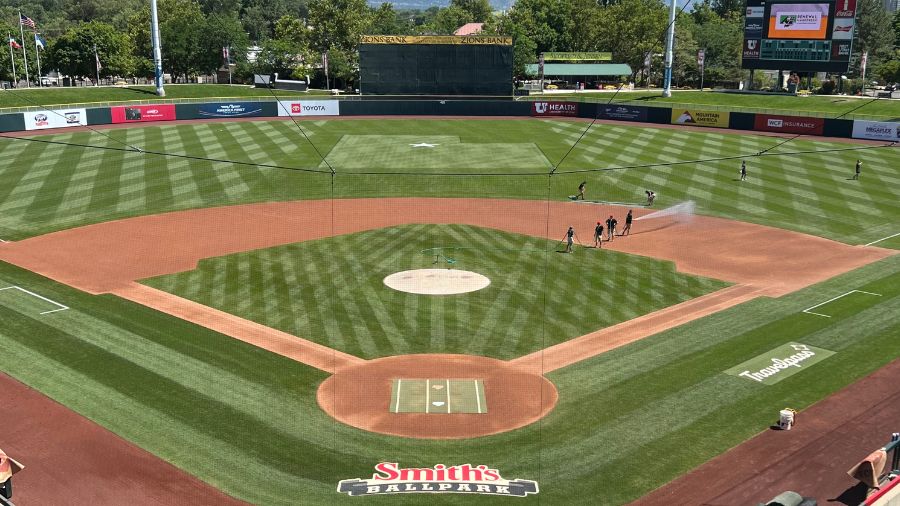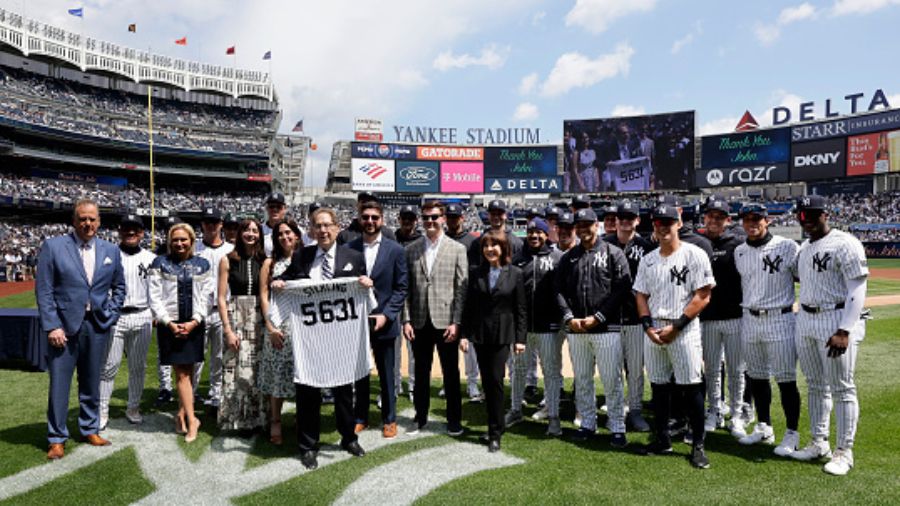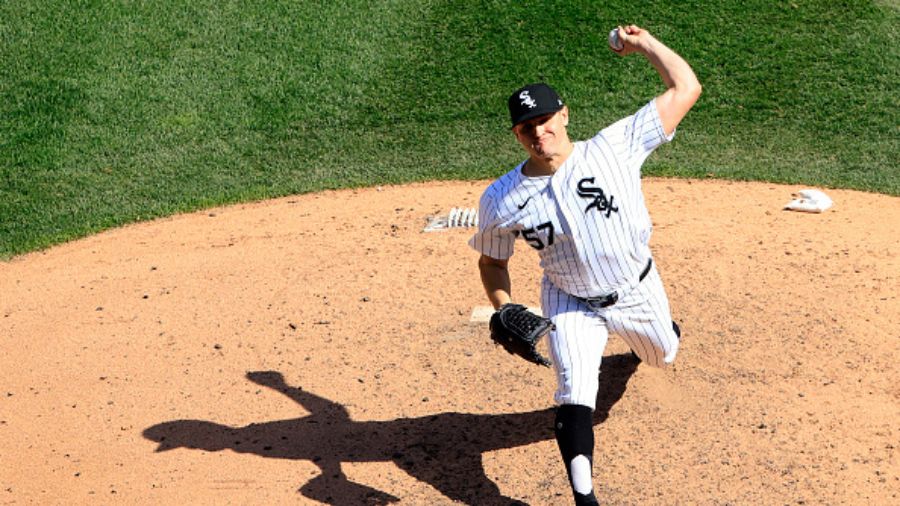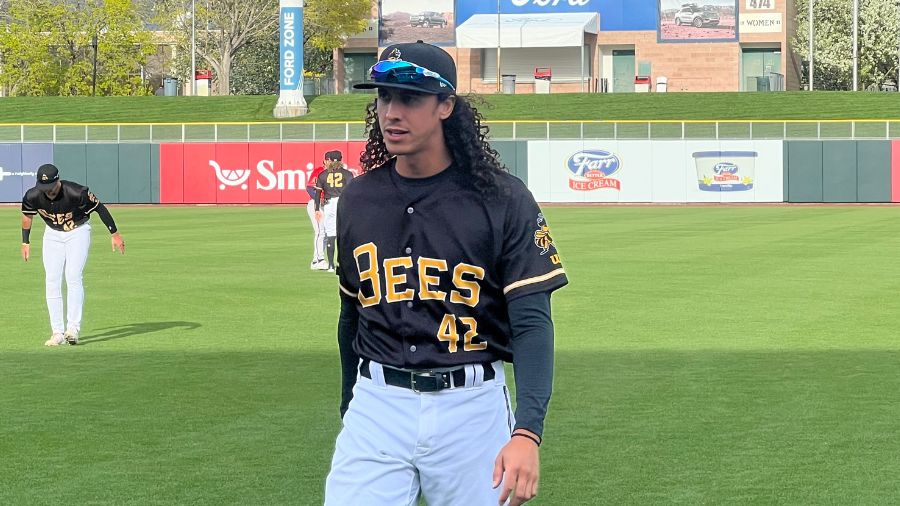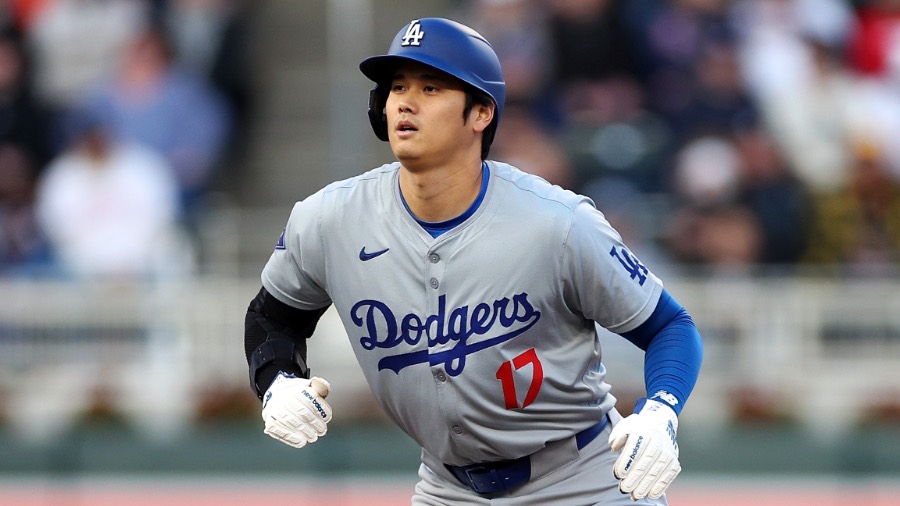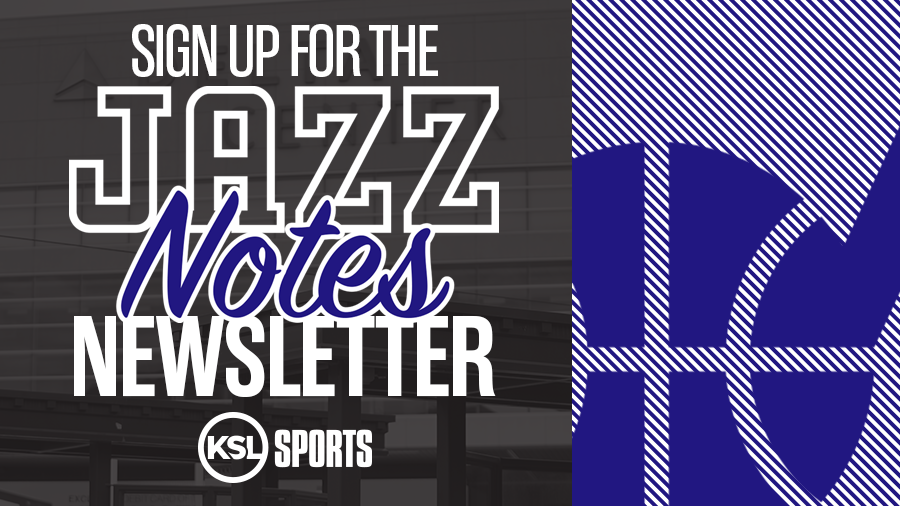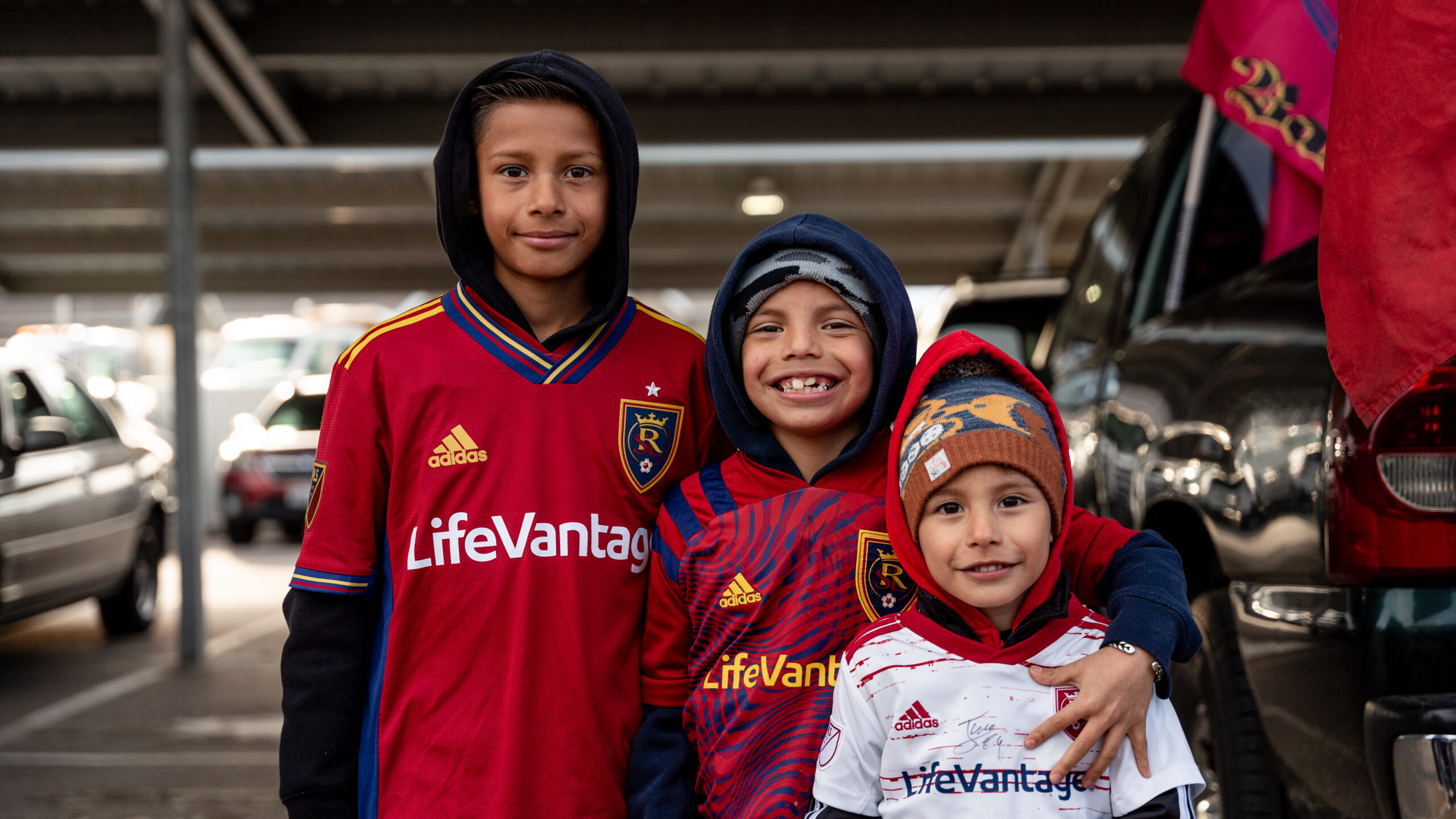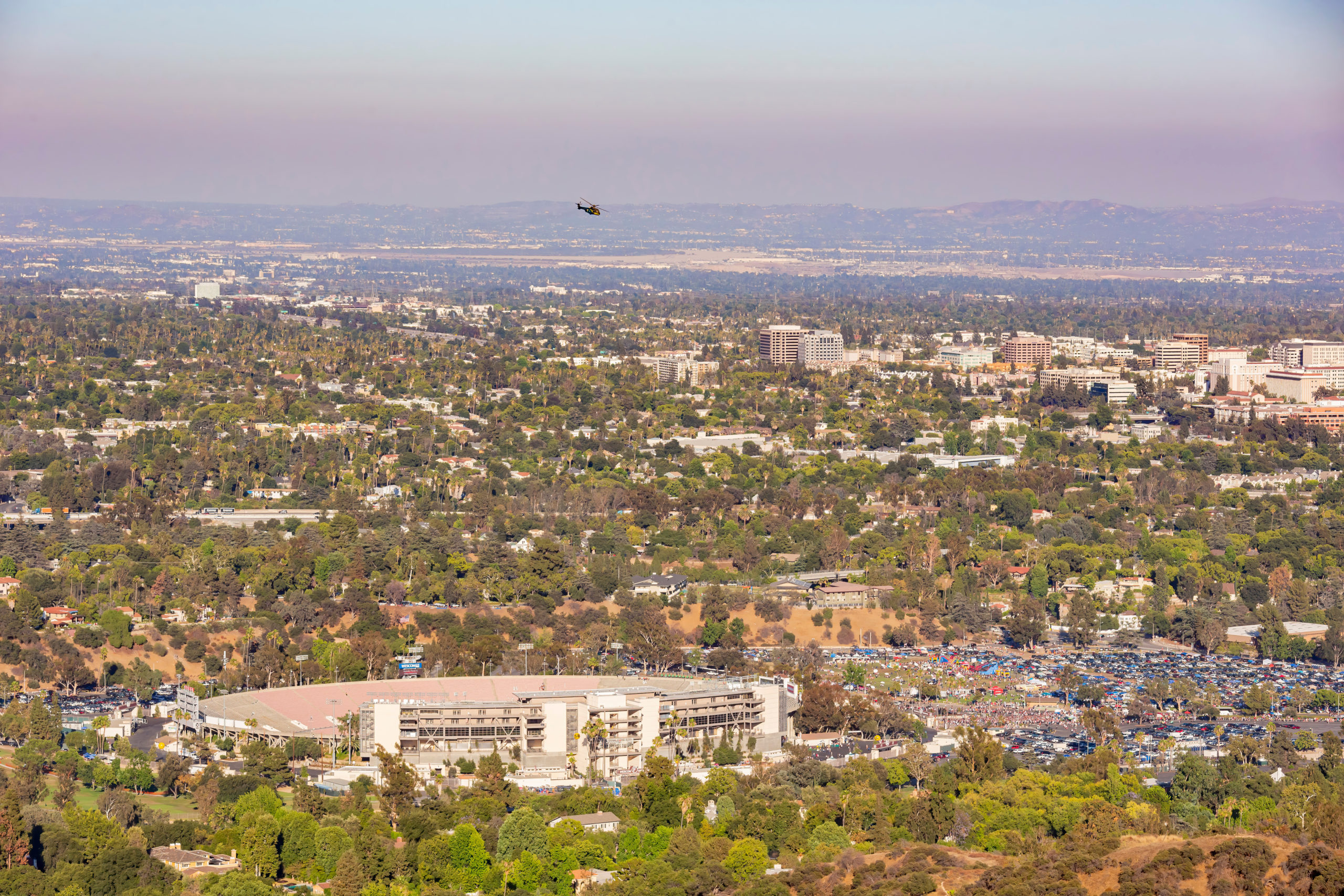MLB Adopts Pitch Clock, Shift Limits, Bigger Bases for 2023
Sep 9, 2022, 2:24 PM | Updated: Oct 4, 2022, 1:55 pm
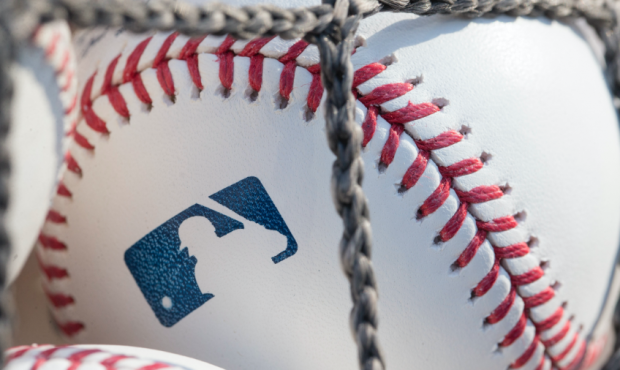
A baseball with MLB logo is seen at Citizens Bank Park before a game between the Washington Nationals and Philadelphia Phillies on June 28, 2018 in Philadelphia, Pennsylvania. (Photo by Mitchell Leff/Getty Images)
(Photo by Mitchell Leff/Getty Images)
NEW YORK (AP) — Major League Baseball adopted its first pitch clock, limits on defensive shifts and larger bases for next season in an effort to shorten games and increase offense in a tradition-bound sport.
The decision on the clock and shift restrictions by the sport’s 11-man competition committee was made Friday over the unanimous opposition of the panel’s players, who approved the larger bases. The changes had long been pushed by baseball Commissioner Rob Manfred in an effort to combat the increase in dead time over four decades and suffocation of offense in the age of analytics.
“Throughout the extensive testing of recent years, minor league personnel and a wide range of fans — from the most loyal to casual observers — have recognized the collective impact of these changes in making the game even better and more enjoyable,” Manfred said in a statement.
Pitch Timer: How the pitch clock will increase pace of play ⬇️ pic.twitter.com/czTLdnM1Uh
— MLB (@MLB) September 9, 2022
Shift restrictions: More on how the shift restrictions will showcase athleticism ⬇️ pic.twitter.com/SW5SizwZmB
— MLB (@MLB) September 9, 2022
Until last winter, MLB needed one year advance notice to make on-field rules changes without approval of the players’ association. The union agreed in the March lockout settlement to establish the committee, which includes six management representatives, four players and one umpire.
“Players live the game — day in and day out. On-field rules and regulations impact their preparation, performance, and ultimately, the integrity of the game itself,” the union said in a statement. “Major League Baseball was unwilling to meaningfully address the areas of concern that players raised.”
The pitch clock will be set at 15 seconds with no runners on base and 20 seconds with runners — up from the 14/19 tested at Triple-A this season and 14/18 at lower minor league levels.
There will be a limit of two of what MLB calls disengagements — pickoff attempts or steps off the rubber — per plate appearance, and a balk would be called for a third or more unless there is an out. The disengagement limit would be reset if a runner advances.
Breaking: MLB's competition committee has voted to implement a pitch clock, larger bases and ban defensive shifts starting in 2023, sources tell @JeffPassan.
15-second clock with bases empty, 20 with runners on; and two fielders on each side of 2B bag, both feet on the dirt. pic.twitter.com/uPSZ9GbZ8j
— ESPN (@espn) September 9, 2022
A catcher will be required to be in the catcher’s box with nine seconds left on the clock and a hitter in the batter’s box and focused on the pitcher with eight seconds remaining. Penalties for violations will be a ball called against a pitcher and a strike called against a batter.
A batter can ask an umpire for time once per plate appearance, and after that it would be granted only at the umpire’s discretion if the request is made while in the batter’s box.
The clock has helped reduce the average time of a nine-inning game in the minor leagues from 3 hours, 4 minutes in 2021 to 2:38 this season. The average time of a nine-inning game in the major leagues this year is 3:06; it was 2:46 in 1989, according to the Elias Sports Bureau.
The shift limit requires two infielders to be on either side of second and all infielders to be within the outer boundary of the infield when the pitcher is on the rubber, and infielders may not switch sides unless there is a substitution.
AVERAGE TIME OF NINE-INNING GAME BY LEVEL THIS SEASON:
No pitch clock
MLB: 3:04
—————-
Pitch clock
Triple-A: 2:43
Double-A: 2:40
High-A: 2:34
Single-A: 2:36— Sam Dykstra (@SamDykstraMiLB) September 9, 2022
Use of shifts has exploded in the past decade, from 2,357 times on balls hit in play in 2011 to 28,130 in 2016 and 59,063 last year, according to Sports Info Solutions. Shifts are on pace for 68,000 this season.
The size of bases will increase to 18-inch squares from 15, promoting safety — first basemen are less likely to get stepped on — but also boosting stolen bases and offense with a 4.5-inch decrease in distance between first and second, and second and third.
Committees members include St. Louis CEO Bill DeWitt Jr., San Francisco chairman Greg Johnson, Colorado CEO Dick Monfort, Toronto CEO Mark Shapiro, Seattle chairman John Stanton and Boston chairman Tom Werner, and umpire Bill Miller. Players on the panel include Cardinals pitcher Jack Flaherty, Rays pitcher Tyler Glasnow, Blue Jays infielder/outfielder Whit Merrifield and Giants outfielder Austin Slater, and Cubs infielder Ian Happ also participated as an alternate.

